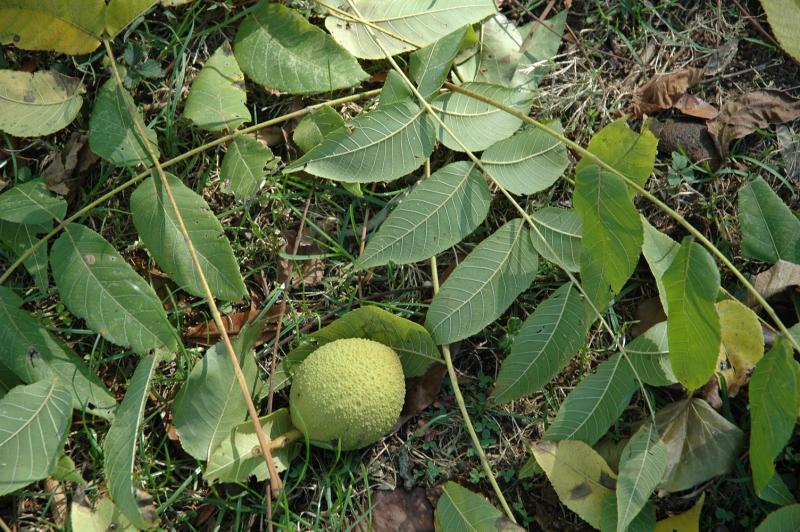The sight of wilting, yellow leaves, or stunted growth means it is time to look around your landscape and surrounding landscapes for clues. A common cause of these symptoms is the black walnut tree.
This native tree, prized for its lumber, makes gardening in its vicinity a challenge. All parts of this tree including the fruit, leaves and branches contain juglone, and the roots can also excrete it into the soil. Juglone-sensitive plants exhibit symptoms, and juglone can even kill tomatoes and their relatives. This interaction between plants is known as allelopathy.
The concentration of juglone varies throughout the growing season. There is a greater concentration in the actively growing leaves in spring. The amount in the roots remains relatively high throughout the summer, with the juglone concentration increasing in the hulls as the nuts mature.
The black walnut tree’s close relatives like butternut, pecan, shagbark hickory and English walnut also contain juglone, but the concentration in these trees is much lower and rarely affects juglone-sensitive plants.
The greatest concentration of juglone is usually within 50 to 60 feet of the trunk of large black walnuts. Rule out other causes such as a lack of sunlight, over- and under-watering, and over- or under-fertilization.
One solution to this challenge is to grow juglone-tolerant plants. Review lists of juglone-susceptible and resistant plants prepared by several universities. These lists are by no means complete, but they do provide a good starting point. You may want to test plants you want to grow but that do not appear on any lists. Just plant one or two, and if they thrive you can add more. If they suffer, you may want to add them to your do-not-plant list and try something new.
Minimize your frustration by growing susceptible plants at least 50 feet away from black walnut trees. The juglone concentration becomes less toxic the farther you move away from the tree.
You could also create a juglone-free raised bed. Cover the soil and line the sides of the raised bed with water-permeable weed barrier fabric. The fabric can help slow or prevent the invasion of black walnut roots into the raised-bed garden. Cover the barrier as you fill the bed with fresh topsoil free of juglone.
Removing the tree, if it is on your property, is not an immediate solution. The juglone remains in the soil until the roots, nuts and leaves totally decompose.
Consider this as another factor when selecting the right plant for the growing conditions. Selecting juglone-resistant plants can greatly reduce your frustration and increase your gardening success.





















































